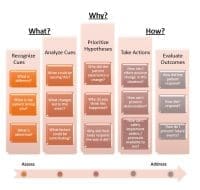Curmudgeons’ reputation for malevolence is undeserved. They’re neither warped nor evil at heart. They don’t hate mankind—just mankind’s absurdities. What follows is a curmudgeon’s response to the various absurdities currently circulating about healthcare reform circa 2009.
“We’re moving too fast.”
Comparing lawmakers to sleazy street-corner salesmen (how apt!), an ad sponsored by a lobbying arm for big insurance complains lawmakers are trying to rush a healthcare overhaul through before the public can digest it. But the details the ad claims Congress is trying to gloss over have been debated for months–in newspapers, endless TV talks shows, and the halls of Congress. Moreover, attempts at healthcare reform go back at least six decades. For those of you who’d like to see the timeline (which starts in 1900!), go to http://www.pbs.org/healthcarecrisis/history.htm. You may be surprised at just how LONG things have been debated and discussed!
“Most of us already are insured.”
Yes…well, maybe. The California attorney general’s office opened an investigation Thursday into allegations that the state’s largest health insurers were rejecting medical claims at alarming rates ranging from 27% to 40% during the first 6 months of this year. The insurance companies defended themselves by claiming the denials were misinterpreted, and pointed out that claims are always made after the care is received; thus, no one were denied care, but rather providers were denied payment after the fact. Of course, they don’t mention who ends up having to pay. And if you do get sick, you’ll be dropped ASAP. So it seems like you only think you have insurance in the USA today!
“ ‘Obama Care’ will make us pay for illegal immigrants’ care.”
Duh! Who do you think is paying now? Illegal is illegal—before or after healthcare reform. If someone who is an illegal immigrant comes to the emergency department today injured, gravely ill, or in active labor, she or he will receive care and it will be paid for by the taxpayer. Ditto after “reform”.
“It costs too much.”
Whatever the final healthcare package looks like, it must be compared to what we’re already paying! The government already pays for or subsidizes everything. And there’s so much overhead on so many programs, much of which is deducted from taxes—yet this isn’t counted in the analysis of “government spending” on health care. And then there’s private, employer-sponsored coverage that runs about $12,000+/year, for which the employer can deduct a huge chunk on its taxes. Again, this is rarely counted in the final toll. And, of course, there are Medicare, Medicaid, CHIPS, Military, VA, Congressional health insurance, etc., which are counted as government spending. The government also subsidizes individuals (Medical Savings Accounts, deductions for medical expenses etc). And if you even think of withdrawing government support for any of these, you will meet with screams of outrage from the private sector and their insurance company buddies—so loud your ears will ring.
As for those death panels…
Please! The case for killing Granny has yet to be suggested—in Congress or anyplace else!



















1 Comment.
Thankyou for clearly articulating the issues involved in healthcare reform.
Insurance companies have created an inpenetrable maze that slows the delivery and effectiveness of healthcare and increases healthcare expense. Preexisting conditions are only one of the ploys used to deny the few who have insurance..there are quite a few other tricks in their bag (ie any gap in coverage etc.) These games cost us money!!